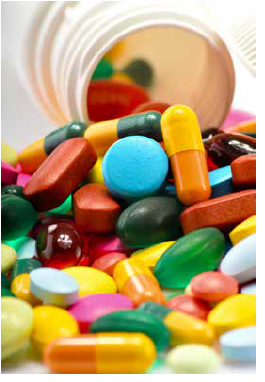BY PHILIP CARROLL
From the checkout line at the grocery store to the total at the gas pump, consumers nationwide are feeling the pinch of soaring costs. With prices rising everywhere, those requiring medication have not been spared. Armed with patent protections, brand medication prices continue to increase, year over year. January 2021 saw 832 brand medications raise their list price, with an additional 791 increases in January of 2022. Of those brand medications, specialty medications continue to be the main driver in employers’ increased drug spend. Specialty medications are those that tend to have a higher cost and treat complex or chronic conditions such as multiple-sclerosis and cancers. According to a study released by California’s Department of Managed Care, specialty drugs account for 60.2% of total spend while only accounting for 1.6% of prescription drugs dispensed. These numbers can be a bit hard to swallow.
 Generics offer potential savings
Generics offer potential savings
However, just because costs can rise, doesn’t mean they have to. Generic medication offers a viable alternative to these increases. As reported by 46brooklyn Research, an Ohio non-profit, over the past five years, generics have consistently seen cost deflation ranging between 5-15%, with the use of generics being one of the key drivers of value in pharmacy benefit. On average, generic drugs cost 30 to 80% less than their brand-name alternative. Steering member usage from brand name medication to generics can offer less hassle and more savings.
Consider the following case study:
An analysis of a company’s drug spend was conducted, finding that their top five drugs accounted for 56% of their total spend. The client’s main objective was overall cost savings, as they were in growth-mode. The PBM conducting the review knew these high-cost brand medications, as well as others on their formulary, were eligible for patient assistance programs (PAP), and was confident in their ability to lower the client’s drug spend. Supporting this PAP strategy for the high-cost brand medications was a targeted approach to remove brands that offer little, if any, therapeutic superiority over their widely available generic counterparts. The PBM implemented a tiered formulary, with placement of certain drugs on tiers 2 or 3, enabling the use of step therapy and prior authorizations where a therapeutic equivalent was available and clinically appropriate. Most of the PBM recommendations were implemented by the client. As a result, the client experienced a 38% reduction in overall drug spend that included a 62% reduction in brand costs. It is important to note this coincided (and to some degree facilitated) the client’s overall census growth. This resulted in a 36% increase in utilizers and 30% increase in prescriptions prescribed.
Making potential savings a reality
A look at any client’s pharmacy benefit strategy should always start with ensuring maximum generic utilization, but are these savings replicable across different member groups? Through a review conducted by the U.S. Government Accountability Office (GAO), a series of studies stimated the U.S. health care system realized savings of more than one trillion dollars from 1999 through 2010, simply by switching from brand-named medications to generic. These savings translate to individual payers as well. According to a report released by AARP, an analysis of six drug therapy classes found one PBM was able to provide a savings of approximately $230 million simply by switching to generic anti-cholesterol medication. While savings are always client-specific and dependent on member mix and formulary utilization, a generic-driven formulary has the ability to provide each subscriber with substantial savings.
Knowing that heavy generic utilization leads to savings, how can companies effectively guide their membership to make the generic choice? A relatively simple approach is to implement a mandatory generic program. Keep in mind, the laws that govern pharmacy dispensing and pharmacist substitution vary by state. Some states allow members to choose to fill their prescription with the branded version, despite the prescriber allowing a generic; it is called “DAW 2,” and this is where a benefit-enforced generic program will provide savings.
Plan sponsors can implement a Dispense As Written (DAW) penalty, also known as a member-pay-the-difference penalty. With this program, once the formulary manager identifies that a generic equivalent is available, the “mandatory generic requirement” is active at the point-of-sale at the pharmacy. If the member still wishes to fill the branded medication, they pay the difference between the cost of the brand and the generic, in addition to their copay. Clients will immediately see the benefit of reduced costs, due to increased member paid portion. Additionally, generics are often available for extended day supplies, further lowering their cost to the plan sponsor and its members.
Low-cost generics are often beneficial not just for plan sponsors, but for individual members as well. As an incentive for participation in these generic programs, many generics are offered at either a zero-cost copay or a very low copay. With medications that are approved by the FDA to be equally efficacious as the high-cost brand names, these programs provide both instant savings to the member and long-term savings to the plan sponsor.
Another way generics can provide savings is through a comprehensive formulary exclusion program. By preventing member utilization of medications that provide low therapeutic value, plan sponsors will be paying for clinically appropriate medications at the best prices. For example, Rayos (extended-release prednisone) at a cost of approximately $2,685 cannot be medically justified when generic prednisone (immediate-release) costs about $7.75.
Measuring the shift to generics
One way to monitor the success of generic programs is to monitor the generic dispensing ratio (GDR). This is the number of generic fills divided by the total number of prescriptions filled for the whole plan. The higher the GDR number, the lower the prescription drug costs tend to be.
According to a study conducted by the Journal of Managed Care Pharmacy (JMCP), prescription drug cost savings come with increases in GDR. In the years studied, each one percentage point increase in GDR correlated with a 2.5% drop in gross pharmacy expenditures, with slightly more than half of the savings being derived from the conversion from brand to generic medications. The remaining savings were found in reduced brand drug utilization. To maximize savings, each plan should aim for an 85%+ ratio. As an aside, when making the push for high generic utilization, it is important that pharmacy benefit managers, in conjunction with plan sponsors, do not prioritize GDR over that of clinically appropriate prescription utilization.
Is reliance on generics the answer?
Yes – and no. The good news is that heavy generic utilization has proven effective, and with big name drugs like Eliquis, Ibrance, Prolia and Stelara poised to lose patent protections, more generics will become available in the battle against rising costs. However, as reported by Scrip, the top 10 pharmaceutical manufacturers have more than 46% of their revenues at risk as they lose patent protections, with not enough in the development pipeline to fill those voids. This means the pharmaceutical industry will increasingly feel pressure to provide new high-cost medications to continue driving revenue for manufacturers. What does this mean for plan sponsors?
PBMs continue to play an important role
When providing benefits, there will always be cost drivers, both seen and unforeseen. The ultimate purpose of a PBM is to develop programs and strategies that will efficiently facilitate the benefit structure and save plan sponsors money, all while continuing to provide continual feedback that allows plan sponsors the ability to make the best decisions for their groups. While a generic driven formulary is sure to save the plan sponsor money, there are a myriad of other approaches that can be implemented in the fight against increasing drug spend. PBMs can offer utilization management programs to prevent overspending, such as:
• Prior authorization requirements
• Well-vetted step therapy requirements
• Therapeutic substitutions
• Formulary management
A well rounded PBM will continue to monitor usage, even after dispensing the drug, offering:
• Retrospective drug utilization reviews
• Disease management programs
• High-cost user drug utilization reviews
Even with all of the programs offered to keep costs at bay, there are going to be times that costs still rise. PBMs will assist with patient assistance programs (PAPs), as a way to minimize costs to the consumer and plan sponsor.
Ultimately, effective cost containment strategies (whether they be formulary management, prior authorization, or mandated generic programs) can make all the difference in a sponsors’ ability to provide benefits that align with their goals of affordable coverage.

PHILIP CARROLL is VP of Sales and Account Management at Integrated Prescription Management (IPM), a full-service, middle market PBM that works with self-funded employer groups, brokers, TPAs and behavioral health facilities around the country. Carroll has more than a decade of PBM account management and sales experience and provides client support and development on the West Coast.
Contact info: rxipm.com 877.846.3397, pcarroll@rxipm.com
